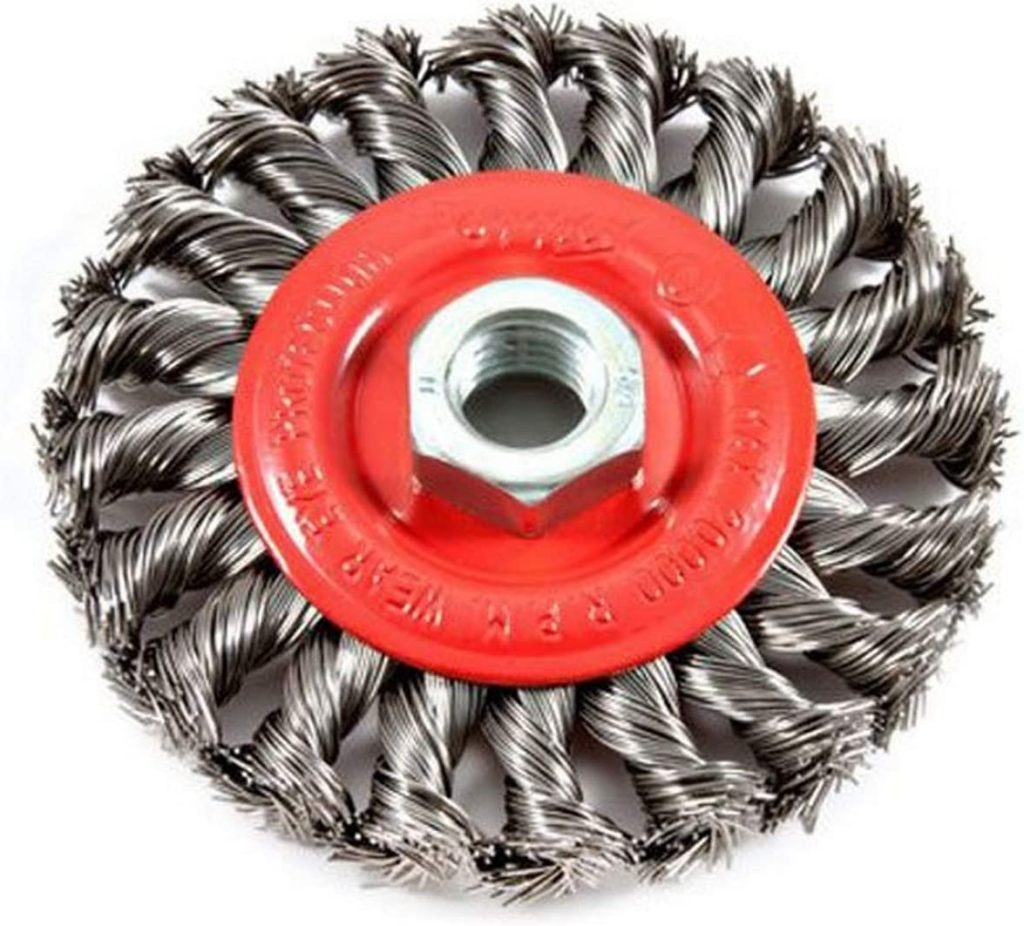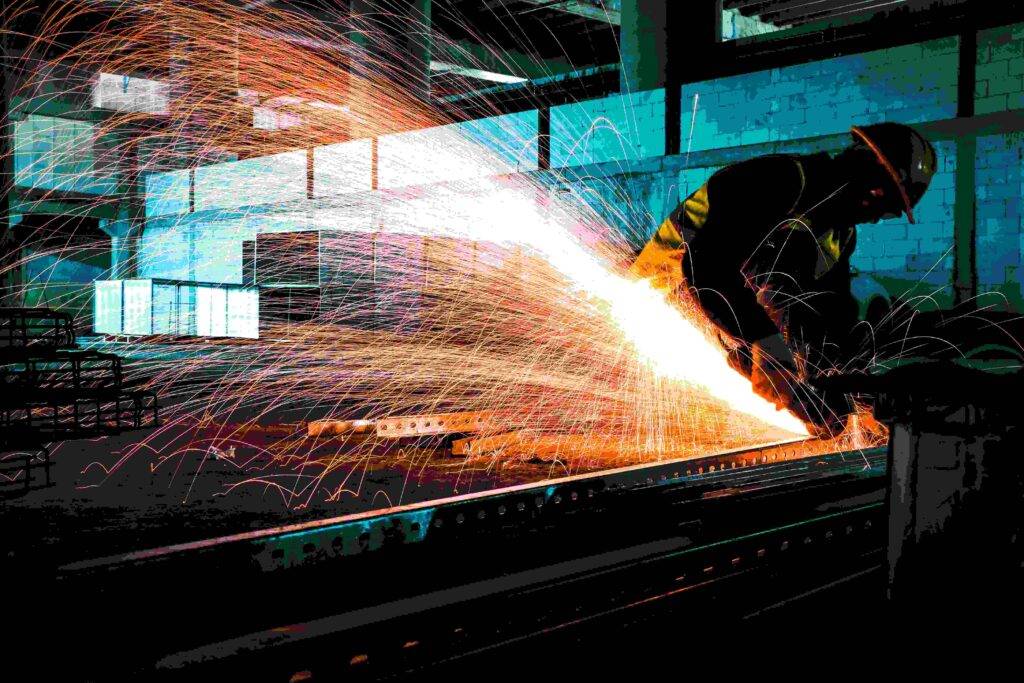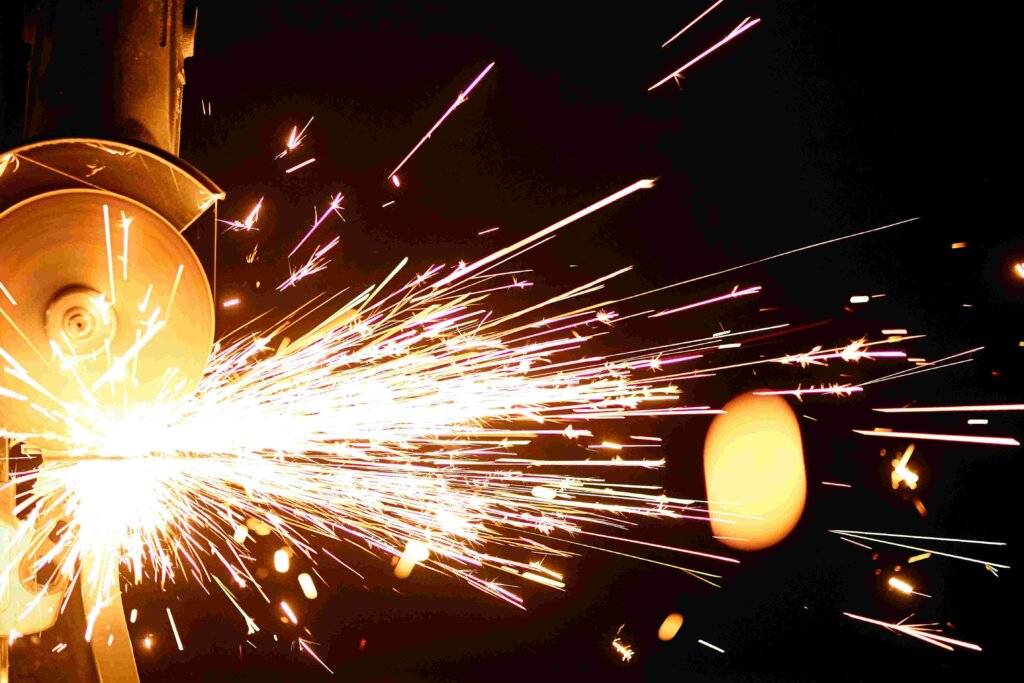An angle grinder wire wheel is a versatile tool accessory commonly used in metalworking, construction, and various DIY projects. This attachment transforms the angle grinder into a surface preparation powerhouse, helping remove rust, paint, weld slag, and more. In this comprehensive guide, we’ll explore what an angle grinder wire wheel is, its various types, how to use it safely, and common applications to get the most out of your tool.
What is an Angle Grinder Wire Wheel?
An angle grinder wire wheel is a circular attachment composed of tightly wound steel or brass wire bristles. It fits onto the spindle of an angle grinder and rotates at high speeds. The rotating wire bristles are excellent for cleaning, smoothing, and preparing surfaces by abrading or scraping off unwanted material.
The wire wheels can vary in terms of wire thickness, density, and configuration (twisted or crimped), making them suitable for different tasks.
Types of Angle Grinder Wire Wheels

Understanding the different types of wire wheels helps you select the best option for your specific project. Here are the most common types:
Crimped Wire Wheel
Crimped wire wheels consist of individual wire bristles that are crimped, meaning they are wavy and loosely packed. These wheels are ideal for light-to-medium surface preparation tasks, such as removing paint or cleaning rust without causing too much abrasion to the surface underneath.
Twisted Knot Wire Wheel
In a twisted knot wire wheel, multiple wire bristles are twisted together to form a stiff bundle. This configuration is much more aggressive than crimped wheels and is ideal for heavy-duty tasks like removing thick layers of rust, weld slag, or mill scale.
Cup Wire Brush
A cup wire brush has the bristles attached to a cup-like base. This type of wire brush covers a larger surface area and is great for flat surfaces, making it highly effective for cleaning large areas quickly.
Bevel Wire Brush
Bevel brushes are angled, allowing you to reach into corners and tight spaces. They are used for cleaning edges, weld joints, and seams.
Key Applications of an Angle Grinder Wire Wheel
Wire wheels are used in various industries and tasks. Here are some of the most common applications:
Rust Removal
Rust is a common enemy of metal surfaces, weakening the material and affecting its appearance. A wire wheel attachment is excellent for scraping off rust, leaving behind a clean surface ready for further treatment, like priming and painting.
Paint Removal
When dealing with surfaces that require repainting or finishing, you need to strip off old paint. Wire wheels can make quick work of removing paint layers without gouging the surface beneath.
Surface Cleaning and Preparation
In metal fabrication, surface preparation is key to ensuring smooth welds, strong bonds, or quality paint jobs. Angle grinder wire wheels are ideal for removing slag, scale, or dirt to prepare surfaces for the next step.
Weld Cleaning
After welding, a bead of material known as “slag” or “spatter” is often left behind on the surface. A twisted wire wheel can easily remove slag and spatter to clean up the weld and leave a smooth finish.
Deburring
Deburring involves removing the sharp edges or burrs left behind on cut metal parts. A wire wheel can smooth down these edges quickly without damaging the overall shape or structure of the piece.
How to Use an Angle Grinder Wire Wheel
Choose the Right Wheel
Selecting the appropriate wire wheel for your task is critical to achieving the desired result. Consider the material you’re working on and the type of work—light cleaning, heavy-duty rust removal, or delicate polishing. For instance, crimped wire wheels are perfect for gentler tasks like paint removal, while twisted knot wire wheels are better for aggressive cleaning like heavy rust removal or weld cleanup.
Properly Attach the Wire Wheel
After selecting the right wire wheel, it’s time to mount it on your angle grinder. Follow these steps:
Ensure the Grinder is Unplugged: Before attaching the wire wheel, always disconnect the grinder from its power source to avoid accidental startup.
Install the Wheel: Insert the wheel into the grinder spindle and tighten the flange nut using the wrench provided with the grinder. Ensure the wheel is tightly secured to avoid wobbling during operation.
Check Rotation Direction: Ensure the wire wheel’s rotational direction matches that of your angle grinder for safe and efficient operation.
Wear Proper Safety Gear
Angle grinders spin at high RPMs, and wire wheels can eject wire bristles or debris during use, which poses serious injury risks. Always wear the following safety equipment:
Safety Glasses or a Face Shield: Protect your eyes from flying debris and wire bristles.
Gloves: Use heavy-duty gloves to shield your hands from sparks and contact with the wire bristles.
Hearing Protection: Angle grinders are noisy, and prolonged exposure can damage your hearing.
Dust Mask or Respirator: If you’re working with rust, paint, or coatings, wear a mask to avoid inhaling harmful particles.
Use the Right Speed
Most angle grinders allow you to adjust the speed. High-speed settings are great for heavy material removal, while lower speeds are preferable for more delicate tasks. Always start at a low speed when using a wire wheel and gradually increase it, testing on a scrap piece if needed.
Correct Grip and Technique
Hold the grinder firmly with both hands and keep a steady grip, maintaining control of the tool throughout the operation. Let the wire wheel do the work—don’t press too hard on the surface, as this can wear out the bristles faster and potentially damage the material. Instead, gently guide the grinder across the surface.
Work in Sections
Move the grinder in small sections, applying even pressure to ensure a uniform finish. If you’re cleaning a large area, break the surface into smaller portions to maintain control and precision.
Avoid Overheating the Surface
Prolonged use of the wire wheel on metal surfaces can generate significant heat, potentially warping the metal or damaging underlying layers. Periodically pause the work to let the surface cool down.
Common Mistakes to Avoid
Using the Wrong Wheel for the Task
Different wire wheels serve specific purposes. For instance, using a twisted knot wheel for a light paint-removal job may damage the surface. Always match the wheel to the task at hand.
Not Inspecting the Wire Wheel
Before starting, inspect the wire wheel for any broken or missing bristles. Using a damaged wheel can lead to injury or uneven surface treatment.
Applying Excessive Pressure
Pressing too hard on the grinder will wear out the wire wheel faster, can lead to damage to the workpiece, and increases the risk of injury if the wheel breaks.
Conclusion
An angle grinder wire wheel is an indispensable tool for metalworkers, fabricators, and DIY enthusiasts alike. Its versatility and effectiveness in removing rust, cleaning welds, and preparing surfaces make it a must-have attachment for many tasks. By selecting the right wire wheel, following proper safety procedures, and using correct techniques, you can achieve excellent results in your projects.
Always remember to wear the proper protective gear and inspect your wire wheels before each use to ensure safety and optimal performance. With the right precautions and knowledge, you can confidently tackle any metal preparation or cleaning task with ease using an angle grinder wire wheel.



